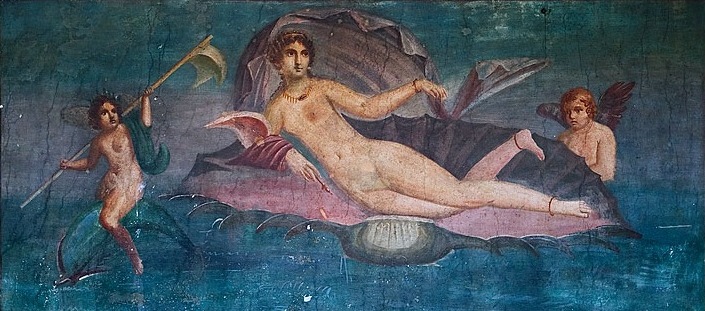Tuesday, September 14th, 2010
I Heart Pliny the Elder
I’ve been reading snippets of Pliny the Elder’s Natural History over the past few days, and I can’t help but think that the ancient Roman and I would have been friends. I definitely feel as curious about the world as Pliny the Elder, but hopefully I am a little more practical (i.e. I wouldn’t risk my life to observe the eruption of Mt. Vesuvius).
There are two things that I like about Natural History. For one thing, I like Pliny’s little anecdotes about artists (I’m sure my penchant for anecdotes is no surprise, gentle reader!). Even though some of the stories seem a little too legendary and far-fetched (Vasari would have loved some of these stories for his Vite), they are still quite fun. For example, Pliny devotes a whole section to stories about the Greek painter Apelles of Cos (you can read some of the stories here). One such story involves speculation that Apelles painted Alexander the Great’s mistress Pancaste for Aphrodite Rising from the Foam (“Aphrodite Anadyomene,” shown above in a Roman mural from Pompeii (House of the Marine Venus, 1st century AD) which is thought to have been based on Apelles’ original work). 1
I’m especially amused by this story about Apelles and a picture of a horse:
“There is, or at least there once existed, a picture of a horse by Apelles. It was painted for a competition in which he sought judgment not from men but from dumb animals. For, seeing that his rivals were getting the upper hand by devious means, he showed the pictures individually to some horses he had brought in, and they neighed only at Apelles’ picture. As this frequently happened on subsequent occasions it proved to be a good test of the artist’s skill.” (Natural History XXXV:95).
The other thing I like about Pliny the Elder is his apparent passion and excitement for his subject matter. I love that he calls the pyramids “a pointless and absurd display of royal wealth.” (Natural History XXXVI: 75) (Not that I agree with that statement, I just love his frank opinion.)
I also can relate to his awe regarding the Colossus of Rhodes (one of the Seven Wonders of the Ancient World, original c. 292-284 BC, shown left through a wood engraving reconstruction by Sidney Barclay, c. 1875). I’m always interested in how a sculpture’s scale compares to that of a human being, and Pliny seems to have that same interest: “No statue has commanded greater admiration than the Colossus of Rhodes made by Chares of Lindos, the pupil of Lysippus. It was about 105 feet high. Sixty-six years after its erection the Colossus was toppled by an earthquake, but even lying on the ground it is amazing. Few people can make their arms meet round its thumb, and the fingers alone are larger than most statues.” (Natural History XXXIV:42). (On a side note, it was announced about two years ago that the Colossus of Rhodes was going to be rebuilt as a giant light sculpture. Does anyone know if progress has been made on that project?)
Who here has read Natural History? Any likes or dislikes? If you haven’t had a chance to get to know Pliny the Elder and his thoughts on art, I’d highly recommend those few chapters from Natural History. Pliny the Elder is witty, opinionated, and just all-around interesting.
1 Pancaste could really be labeled as Alexander the Great’s ex-mistress. Pliny records that the ruler commissioned Apelles to paint Pancaste, and then Apelles ended up in love with his subject. In turn, Alexander gave Pancaste to Apelles, which Pliny noted was indicative of Alexander’s magnanimity. (Natural History XXXV:86-87).





